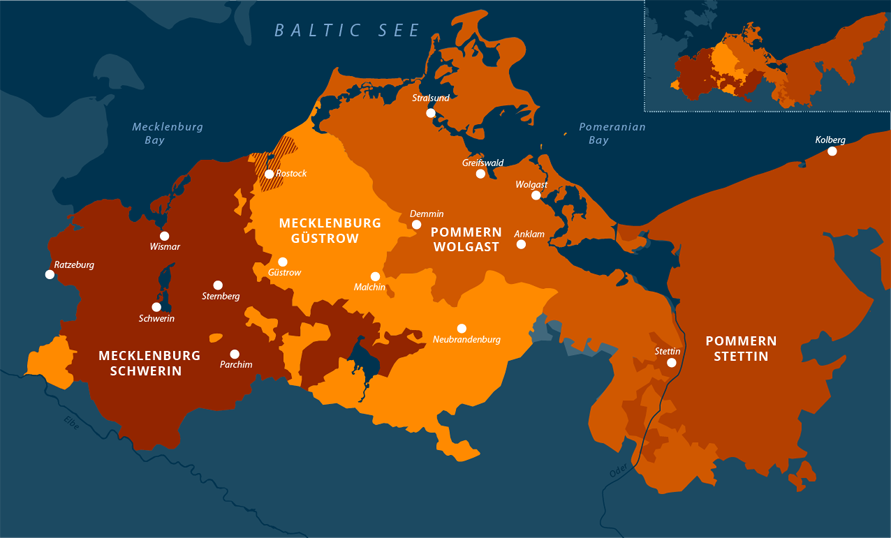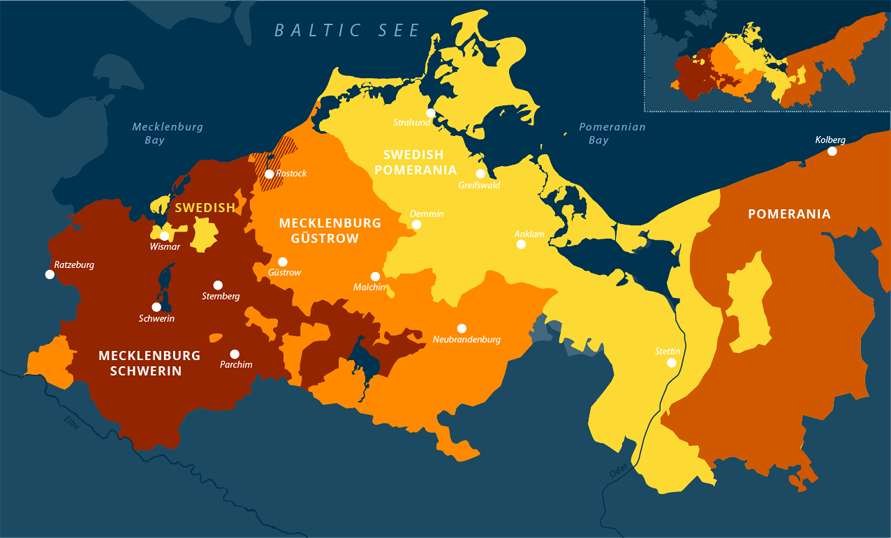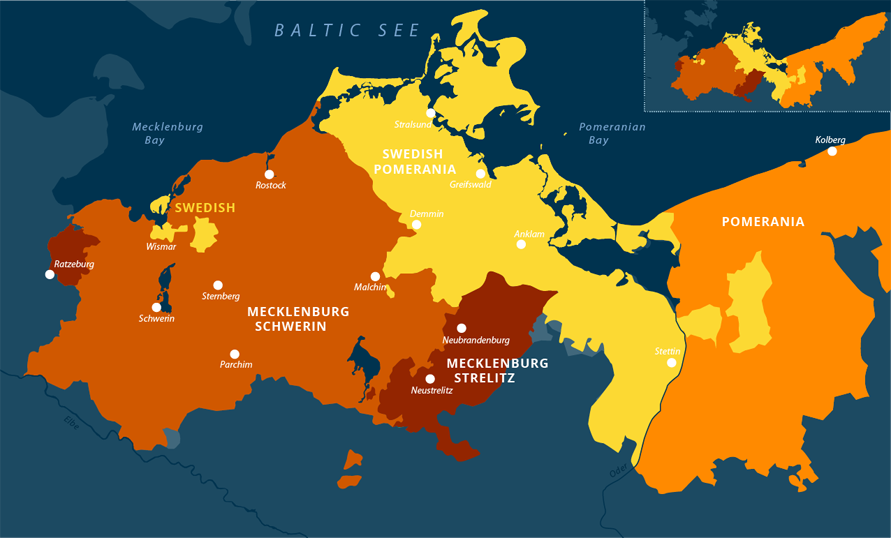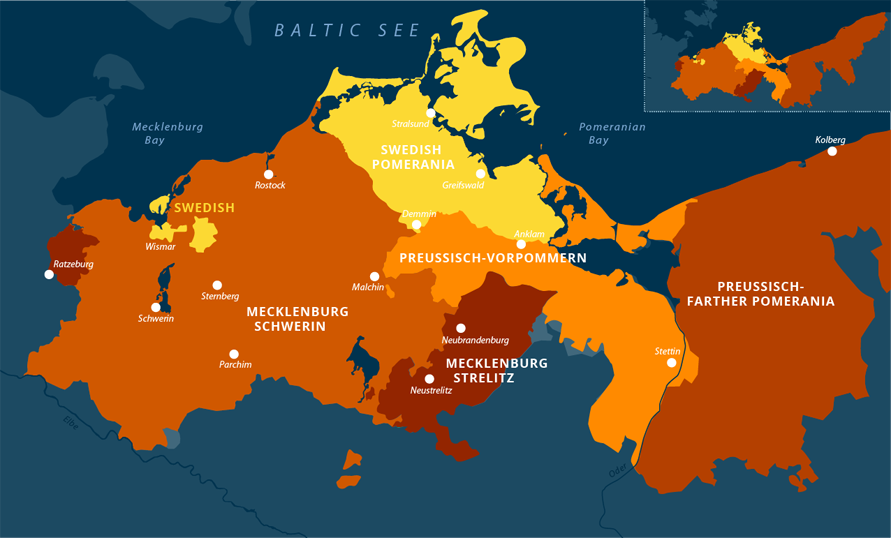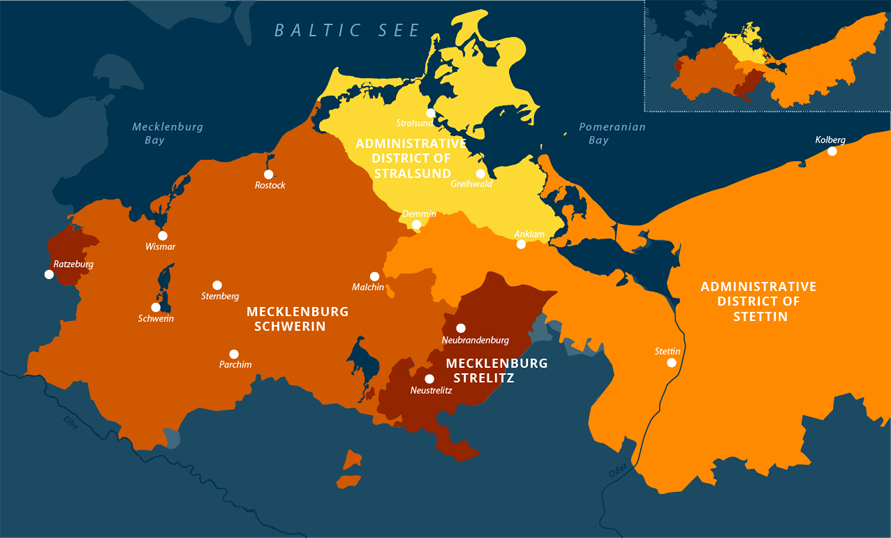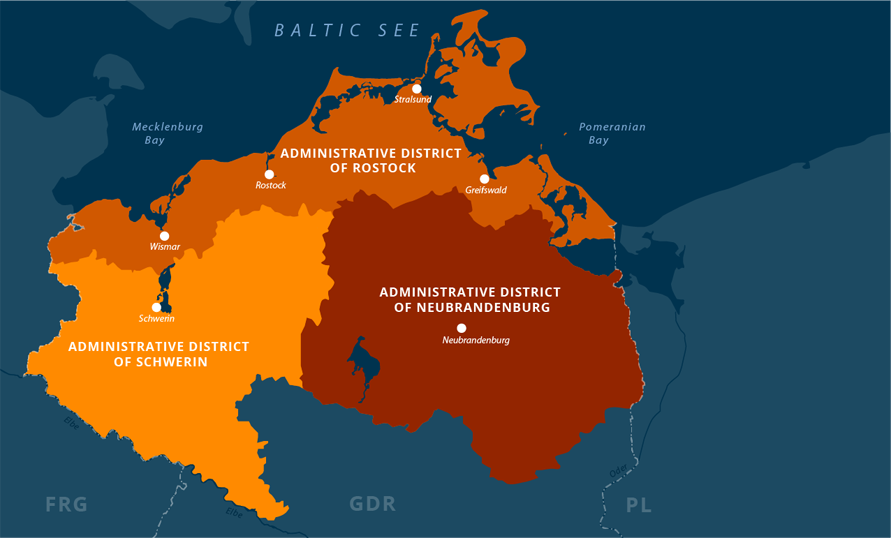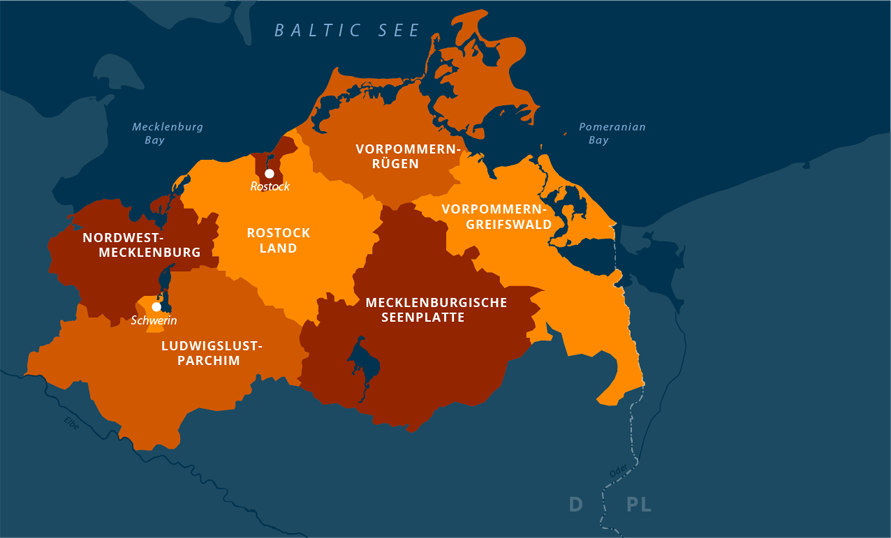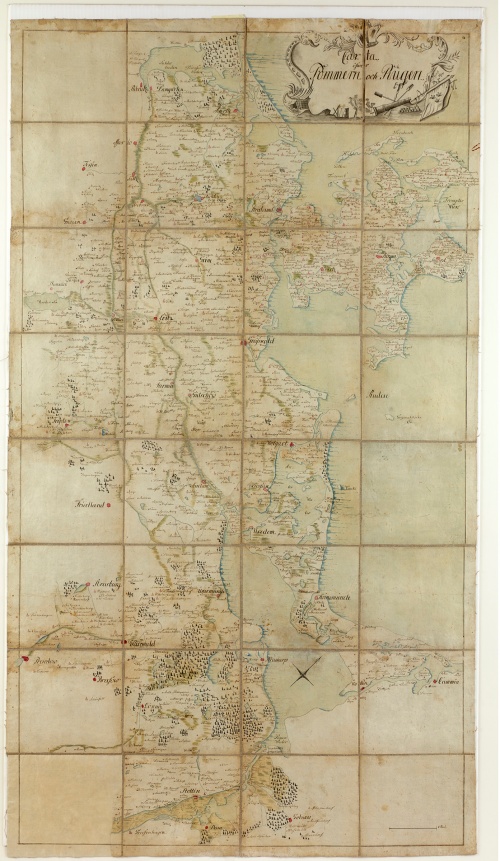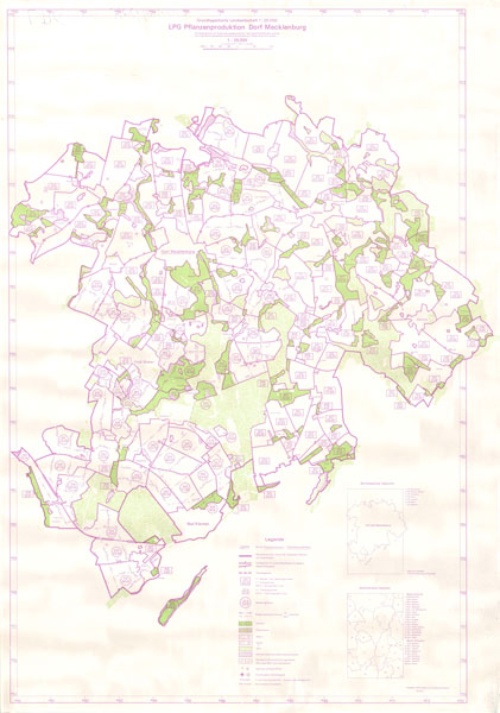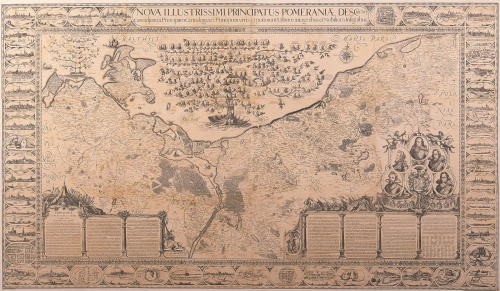Slavic settlement (1000)
The Slavic ethnic groups or tribes have lived in smaller village communities for about 500 years, in habitats without any clearly defined boundaries not far from refuge forts. In their last independent stage of the 12th century, they also founded early urban trading settlements along the Baltic coast. Various versions of their names have been passed down by the Christian immigrants.
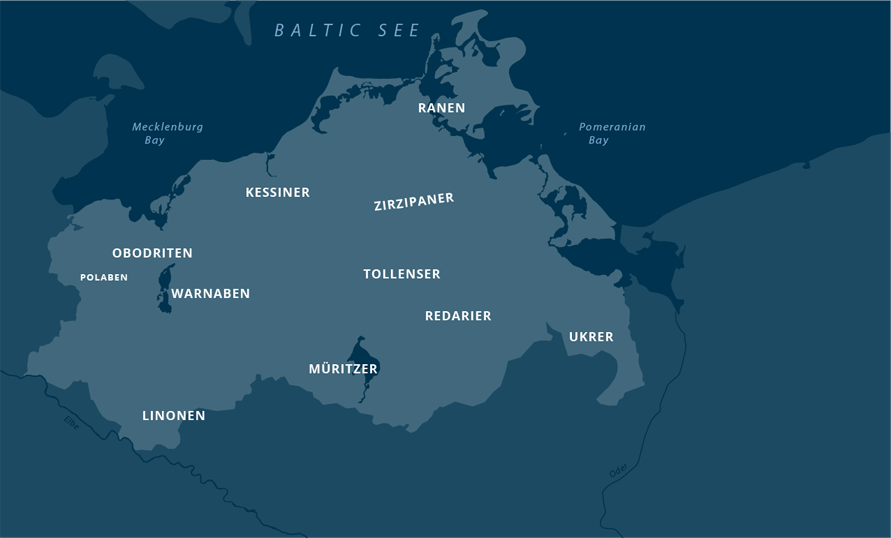
Duchies of Mecklenburg-Schwerin and Mecklenburg-Güstrow
The “Second Partition of Mecklenburg” in 1621 resulted in Mecklenburg-Schwerin and Mecklenburg-Güstrow. Both regents bear the title “Duke of Mecklenburg”. Justice and the church are jointly administered. Dukes, knights, the city of Rostock and the so-called “Vorderstädte” towns (a sort of district capital) of Parchim and Neubrandenburg form the “Landständische Union” (“Union of the Country Estates”). Wismar, Poel and the “Office Neukloster” become Swedish in 1648.
Redistribution according to the Peace of Westphalia 1648
(Grand)Duchies of Mecklenburg-Schwerin and Mecklenburg-Strelitz
With the “Third Partition of Mecklenburg” in 1701, Mecklenburg-Schwerin is considerably enlarged and Mecklenburg-Strelitz receives the Ratzeburg land around Schönberg. Neustrelitz is created as a new planned capital city. The “Landständische Union” remains and resolves, in 1755, the "Landesgrundgesetzlichen Erbvergleich" relating to the hereditary settlement of land. The Swedish areas around Wismar become a de facto part of Mecklenburg again in 1803.
Sweden loses Pomeranian territories to Prussia
Northeast Germany after the Congress of Vienna
In 1803, the Swedish areas around Wismar and the town itself effectively became Mecklenburg again through a 100-year lease, which Sweden waived in 1903. After Napoleon's final defeat, Prussia received the remaining Swedish territories on the southern Baltic coast at the Vienna Congress in 1815 and formed the administrative districts of Stralsund and Stettin in the province of Pomerania.
Mecklenburg-Vorpommern, Mecklenburg and the districts of Rostock, Schwerin and Neubrandenburg
After the end of the World War II, the state of Mecklenburg-Vorpommern was formed (from 1947 only Mecklenburg) with 20 districts and five independent towns. In 1952, the district of Rostock on the Baltic Sea coast (characterised by maritime industry and tourism) and the agricultural districts of Schwerin and Neubrandenburg with 29 administrative districts are established in the GDR. The Brandenburg districts of Perleberg, Templin and Prenzlau have been added.
Federal state of Mecklenburg-Vorpommern
In 1990, the federal state of Mecklenburg-Western Pomerania becomes part of the Federal Republic of Germany, with the state capital Schwerin as its seat of parliament and government. The three districts of Brandenburg go to the state of Brandenburg. After several district reforms, six administrative districts and the two independent towns of Rostock and Schwerin are created in 2012.
